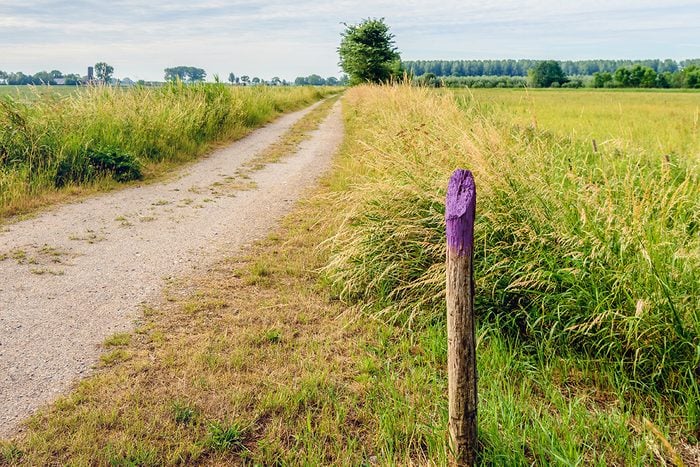
When you’re out exploring new places, it’s always important to be aware of your surroundings. And if you happen to come across a purple fence, there’s a meaning behind it that you should know about.
No Trespassing Zone
In most states, a purple fence serves as a clear indication of a “no trespassing” zone. While property owners can use “No Trespassing” signs, these signs can easily get damaged, stolen, or become illegible over time. On the other hand, a coat of purple paint has staying power.
Purple paint can be applied not only to fence posts but also to trees, making it easily visible to everyone, including those who are color-blind.
Using Purple Paint on Your Fence
If you’re considering using purple paint on your own fence, it’s important to familiarize yourself with the local laws, as not all states have specific regulations for purple fences. However, here are a few general guidelines to get you started:
- Vertical purple stripes that are at least 1 inch wide
- Stripes should be 8 inches long
- Stripes should be placed 3-5 feet off the ground
- Stripes should not be more than 100 feet apart
For painting trees, it’s recommended to use latex or spray paint. The key is to ensure that the boundary is clearly marked and easily visible.
The next time you’re hiking or driving in an unfamiliar area, keep an eye out for purple fences. They serve as a reminder to respect private property and to prioritize safety. Stay observant and enjoy your outdoor adventures responsibly!
And by the way, if you happen to come across purple pumpkins during Halloween, here’s what it means.


